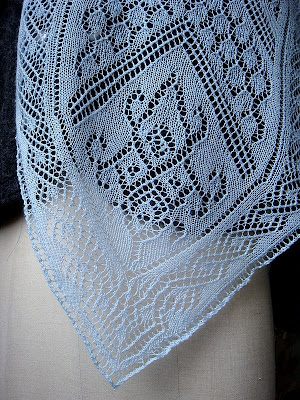 De Chileense garens van Araucanía dragen allemaal een naam die verwijst naar een typisch element van dit land. Copihue is de nationale bloem van Chili, een veelal rode en kelkvormig bloeiende klimplant uit de zuidelijke wouden.
De Chileense garens van Araucanía dragen allemaal een naam die verwijst naar een typisch element van dit land. Copihue is de nationale bloem van Chili, een veelal rode en kelkvormig bloeiende klimplant uit de zuidelijke wouden.De tinten van kleur PT503 van Araucanía Copihue, een dik handgeverfd 100% alpacagaren gevonden bij Stoffenidee in Gent, waren te mooi om aan te weerstaan. Copihue groeit niet in mijn tuin, maar een andere Chileense plant, de Fuchsia magellanica, kan als vervanging dienen voor de afbeelding: The Chilean yarns of Araucanía all bear a name that refers to typical elements of this country. Copihue is the national flower of Chili, a mostly red bellflower found in the forests of the south. The hues of colour shade PT503 of Araucanía Copihue, a bulky hand painted 100% super fine alpaca yarn found at Stoffenidee in Ghent, were too enticing to resist. I have no copihue flowers in my garden, but another Chilean plant, the Fuchsia magellanica, was used as a substitute:
Dit garen lijkt mij erg geschikt voor een winterse sjaal, passend bij mijn Sunrise Circle Jacket:
This yarn is likely to become a scarf, well adjusted to my Sunrise Circle Jacket:

Voor België is het de klaproos,
voor Nederland de tulp,voor Groot-Brittanië de Tudorroos, enzovoort.
It is rather interesting to look up the national flower for each country. For Belgium it is the red poppy, for the Netherlands the tulip, for the United Kingdom the Tudor rose, and so on.
Meer "exotische" landen hebben dan ook dito nationale bloemen. Zo hebben Argentinië en Uruguay de koraalboom gekozen, Guam de Bougainvillea, Zuid-Afrika de Protea, 

More "exotic" countries have according national flowers. Argentina and Uruguay opted for the coral tree, Guam for the bougainvillea, South-Africa for the Protea and Zimbabwe for the Gloriosa or flame lily.


















































